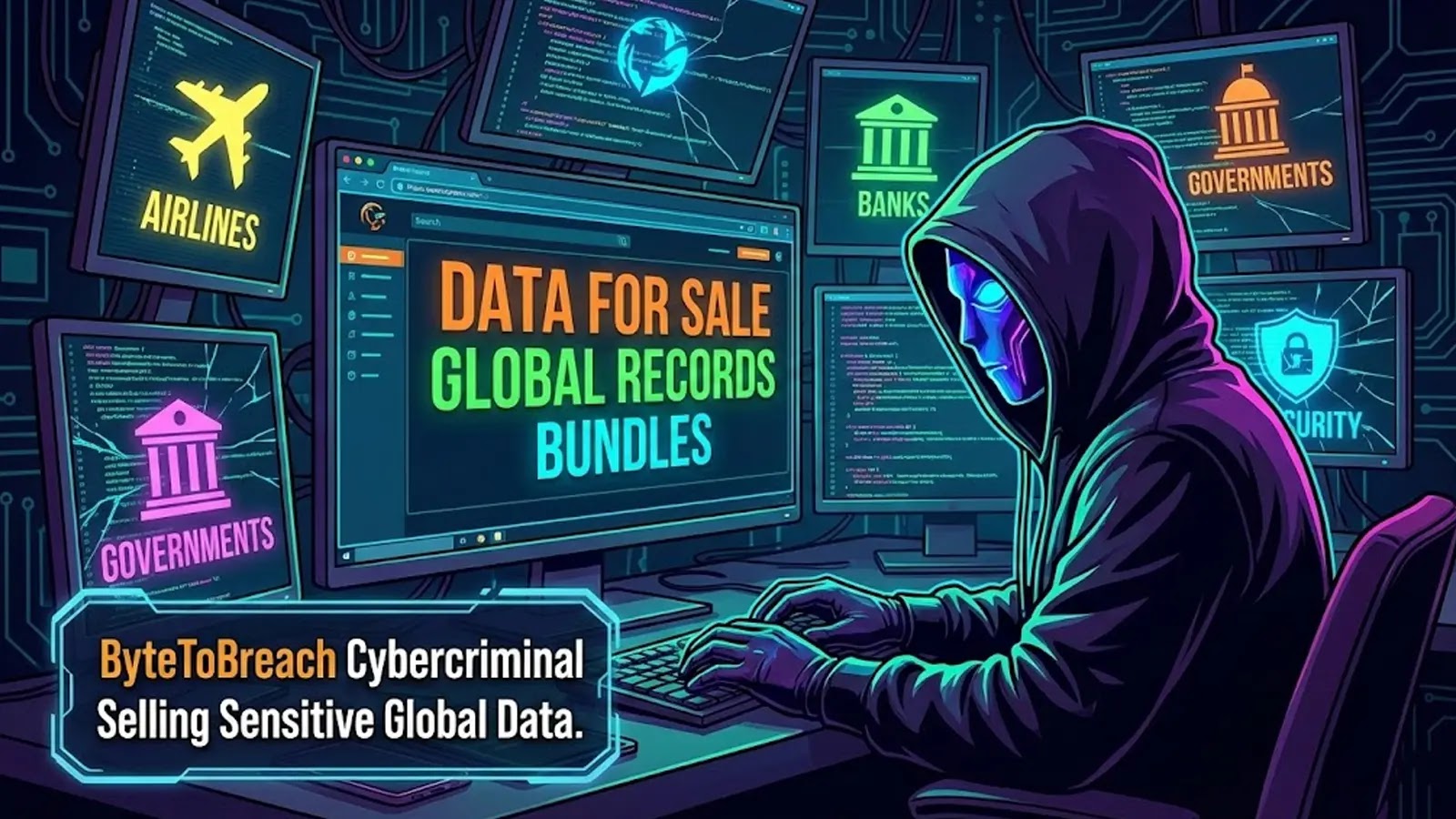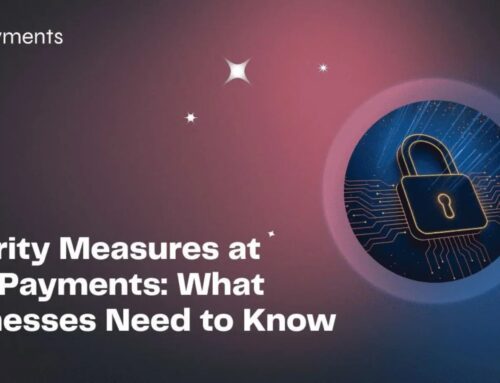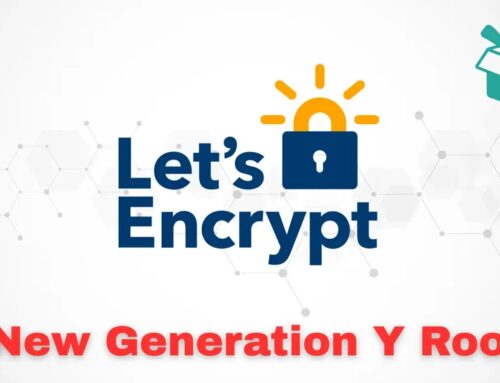
ByteToBreach Cybercriminal Selling Sensitive Global Data from Airlines, Banks, and Governments
A new and unsettling figure has emerged in the digital underbelly, sending ripples of concern through critical sectors globally. Operating under the ominous alias ByteToBreach, this cybercriminal is actively peddling and leaking highly sensitive data pilfered from airlines, banks, universities, and government entities worldwide. The scope and aggressiveness of this operation demand immediate attention from cybersecurity professionals and organizational leaders.
Who is ByteToBreach?
ByteToBreach is identified as a significant threat actor within underground cybercrime markets. Active since at least June 2023, this individual or group employs a cross-platform strategy to maximize reach and impact. Their modus operandi combines sophisticated technical skills with an aggressive approach to self-promotion across various dark web forums, including DarkForums and Dread. The sheer volume and diversity of compromised organizations point to a well-resourced and determined adversary.
Targeted Sectors and Data Impact
The operational targeting of ByteToBreach is extensive and alarming, focusing on sectors that hold vast amounts of valuable and confidential information. The reference article highlights specific industries:
- Airlines: Compromised data could include passenger manifests, travel histories, loyalty program details, and potentially operational information, posing privacy risks and even security threats.
- Banks: Financial institutions are prime targets, with data potentially encompassing customer financial records, account details, transaction histories, and sensitive personal identification information, leading to severe financial fraud and identity theft.
- Universities: Academic institutions often hold a treasure trove of personal data for students and staff, research data, and intellectual property. Breaches can expose personal information, academic records, and proprietary research.
- Government Entities: Attacks on government organizations are particularly perilous, impacting national security, citizen data, and critical infrastructure. Leaked information could range from classified documents to personal data of public servants and citizens.
The sale and leakage of such sensitive data can have catastrophic consequences, including widespread identity theft, financial fraud, industrial espionage, and even geopolitical destabilization.
Tactics and Techniques of ByteToBreach
While specific technical details of ByteToBreach’s exploitation methods are not fully elucidated in the available information, their success in compromising such diverse and high-value targets suggests a blend of advanced persistent threat (APT) capabilities and opportunistic exploitation. Common techniques employed by similar threat actors often include:
- Phishing and Social Engineering: Targeting employees with deceptive emails or messages to gain access credentials or install malware.
- Exploiting Software Vulnerabilities: Leveraging unpatched security flaws in public-facing applications or infrastructure. While no specific CVEs are directly linked to ByteToBreach’s methods in the source, threat actors frequently exploit known weaknesses. For example, vulnerabilities like CVE-2023-2825 (a critical RCE in a popular library) or CVE-2023-35630 (a critical Microsoft vulnerability) could be hypothetically exploited if found in a target’s environment.
- Supply Chain Attacks: Compromising a less secure vendor or partner to gain access to the primary target.
- Brute-Force and Credential Stuffing: Attempting to guess passwords or using previously stolen credentials to gain unauthorized access.
Their “cross-platform operation” and “aggressive self-promotion” indicate a sophisticated understanding of underground market dynamics and a proactive approach to monetizing their illicit gains.
Remediation Actions and Proactive Defense
Organizations across all targeted sectors must adopt a robust and multi-layered cybersecurity strategy to defend against threats like ByteToBreach. Proactive measures are paramount:
- Comprehensive Vulnerability Management: Regularly scan for and patch all software and system vulnerabilities. Prioritize critical and high-severity CVEs. Implement a robust patch management policy.
- Enhanced Endpoint Detection and Response (EDR): Deploy EDR solutions to monitor endpoints for suspicious activity and facilitate rapid response to threats.
- Strong Access Privelege Controls: Implement the principle of least privilege, ensuring users and systems only have access to resources absolutely necessary for their function. Regularly review and revoke unnecessary privileges.
- Multi-Factor Authentication (MFA): Mandate MFA for all user accounts, especially for privileged access and remote connections.
- Employee Security Awareness Training: Conduct regular training to educate employees about social engineering tactics, phishing attempts, and safe computing practices. Train staff to recognize and report suspicious activity.
- Network Segmentation: Implement network segmentation to isolate critical systems and data, limiting the lateral movement of attackers in case of a breach.
- Data Encryption: Encrypt sensitive data both at rest and in transit to protect it even if exfiltrated.
- Incident Response Plan: Develop and regularly test a comprehensive incident response plan to ensure a swift and effective reaction to security incidents.
- Threat Intelligence Integration: Subscribe to and integrate reputable threat intelligence feeds to stay informed about emerging threats, TTPs (Tactics, Techniques, and Procedures) of adversaries like ByteToBreach, and newly discovered vulnerabilities.
Tools for Detection and Mitigation
Implementing the right security tools is crucial for defending against sophisticated threat actors. Here’s a selection of relevant tools:
| Tool Name | Purpose | Link |
|---|---|---|
| Nessus | Vulnerability Scanning & Management | https://www.tenable.com/products/nessus |
| CrowdStrike Falcon Insight XDR | Endpoint Detection & Response (EDR) / Extended Detection & Response (XDR) | https://www.crowdstrike.com/products/endpoint-security/falcon-insight-xdr/ |
| Okta Adaptive MFA | Multi-Factor Authentication (MFA) & Access Management | https://www.okta.com/products/adaptive-mfa/ |
| Proofpoint Email Protection | Advanced Threat Protection for Email (Phishing, Malware) | https://www.proofpoint.com/us/solutions/products/email-protection |
| Splunk Enterprise Security | Security Information and Event Management (SIEM) | https://www.splunk.com/en_us/products/security/enterprise-security.html |
Conclusion
The emergence of ByteToBreach underscores the relentless nature of cybercrime and the persistent threat to sensitive global data. Organizations must prioritize robust cybersecurity defenses, proactive vulnerability management, and comprehensive incident response planning. Given ByteToBreach’s focus on critical sectors and aggressive data monetization, vigilance and swift action are essential to protect organizational integrity and stakeholder trust.





